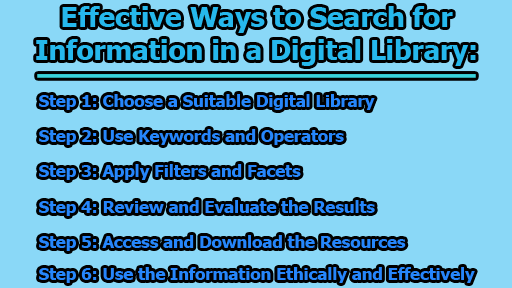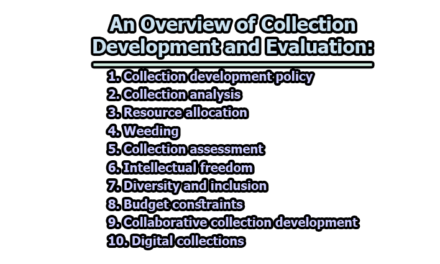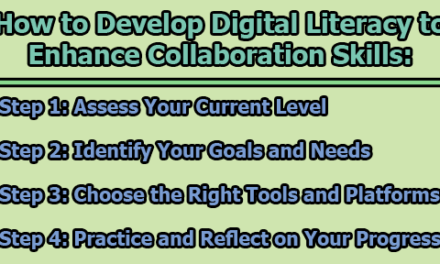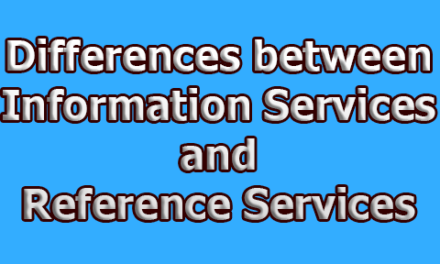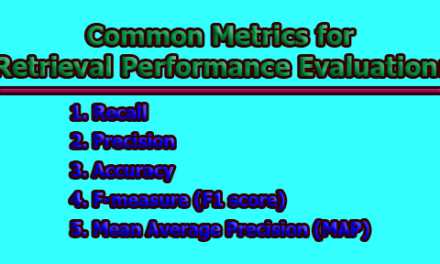Effective Ways to Search for Information in a Digital Library:
Digital libraries have revolutionized the way we access and utilize information for e-learning. These online repositories of books, journals, databases, and various resources offer a vast array of knowledge at our fingertips. However, navigating the digital library terrain can be a daunting task, especially for those unfamiliar with the available search tools and techniques. In this article, we will discuss the most effective ways to search for information in a digital library and how to evaluate and use the results to enhance your e-learning experience.
Step 1: Choose a Suitable Digital Library: The first and most crucial step in your quest for information is choosing a digital library that suits your specific needs. Digital libraries come in various types, including academic, public, thematic, and institutional. Some may require a subscription, login, or membership for full access. You can discover digital libraries through directories like the Directory of Open Access Journals (DOAJ) or by utilizing search engines such as Google Scholar. Seeking recommendations from instructors, librarians, or peers can also lead you to the right digital library.
Step 2: Use Keywords and Operators: Once you’ve selected a digital library, the next step is to refine your search. Keywords are the central words or phrases that best describe your topic, while operators are symbols or words that modify your keywords. For example, using quotation marks allows you to search for an exact phrase, such as “digital literacy.” Boolean operators, such as AND, OR, and NOT, help combine or exclude keywords, such as “digital literacy” AND “e-learning.” Some digital libraries offer advanced search options, allowing you to specify fields, dates, formats, or languages for your search.
Step 3: Apply Filters and Facets: After inputting your keywords and operators, it’s time to narrow down your results using filters and facets. Filters and facets are categories or criteria that help limit your results based on specific attributes, such as subject, author, publication, or type. For example, you can filter results by peer-reviewed articles or open-access resources. You can also sort your results by relevance, date, or popularity. Applying filters and facets ensures you find the most relevant and reliable information for your e-learning requirements.
Step 4: Review and Evaluate the Results: When you receive your search results, resist the temptation to rely solely on the first or most popular entries. Instead, scan the titles, abstracts, and keywords of the results to see if they align with your topic and purpose. Evaluate the credibility, accuracy, currency, and objectivity of the sources. Look for indicators of quality, such as citations, references, or credentials. Tools like the CRAAP test or the SIFT method can aid in the evaluation process.
Step 5: Access and Download the Resources: Once you’ve selected the most suitable resources, the next step is to access and download them. Depending on the digital library and the resource, you may need to click on a link, a button, or a PDF icon to open or download it. You may also need to enter your login details or use a proxy server or a virtual private network (VPN) to access the resource. Always respect the copyright and licensing terms of the resource and cite it properly in your e-learning assignments.
Step 6: Use the Information Ethically and Effectively: The final step in your information search is to use the data ethically and effectively. Avoid copying, pasting, or plagiarizing information; instead, paraphrase, summarize, or quote it in your own words, giving credit to the original source. Analyze, synthesize, and apply the information to your e-learning goals, and communicate it clearly and convincingly to your audience. Tools like citation managers, note-taking apps, or presentation software can assist in using information ethically and effectively.
In conclusion, searching for information in a digital library can be a rewarding experience when approached systematically. By following these steps – choosing the right library, using effective keywords and operators, applying filters and facets, reviewing and evaluating results, accessing resources responsibly, and using information ethically and effectively – you can enhance your e-learning journey and make the most of the wealth of knowledge available in digital libraries. Remember, mastering these techniques will not only help you in your current studies but also serve you well throughout your academic and professional life.

Former Student at Rajshahi University

